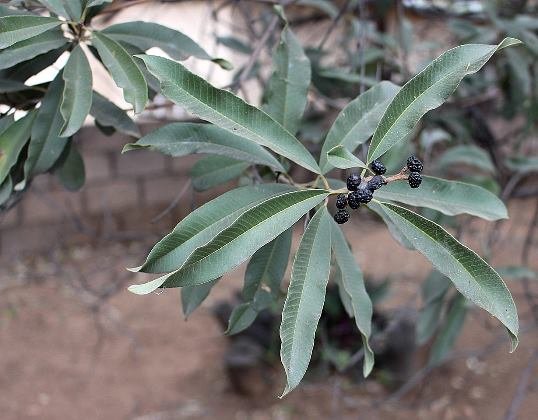Ozoroa

Ozoroa is a genus of small, dioecious trees, suffrutices and shrubs in the Anacardiaceae, cashew or mango family. Ozoroa plants contain a milky, resinous latex, the trees sometimes commonly known as resin trees and harpuis in Afrikaans.
The simple leaves are alternate, whorled or subopposite to spiralling and stalked or nearly sessile. The blades are usually discoloured, hairy and sometimes undulating, bearing many parallel veins.
The flowers grow in panicles from leaf axils and stem-tips, the pedicels joined near the base.
The male flowers have five segments in both calyces and corollas, the petals elliptic, flat or recurving. The disc is lobed and there are five stamens. A vestigial ovary is present in the male flower.
The female flowers have calyces and corollas similar to the male ones, while the disc is here a ring or annulus. There is a one-locular, symmetrical ovary containing one ovule and having three styles with head-like stigmas. Five rudimentary staminodes are present in the female flower.
The often black fruit is a dry or somewhat fleshy, indehiscent drupe, kidney-shaped to nearly globose and unevenly wrinkled to raisin-like.
There are about 40 Ozoroa species of which 20 occur in southern Africa.
The plant in picture is Ozoroa engleri (Leistner, (Ed.), 2000; Coates Palgrave, 2002; Pooley, 1993).

